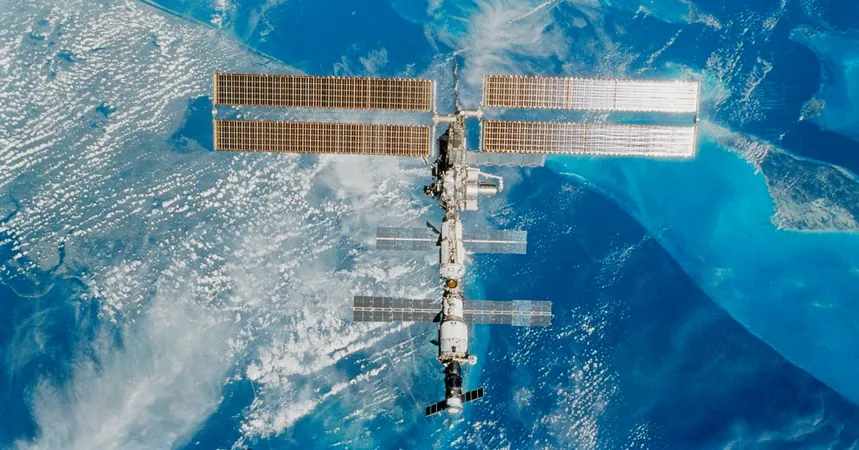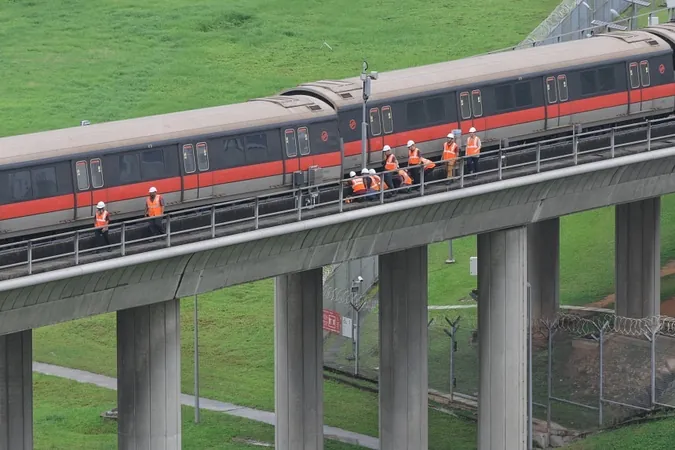
Alarming Leak on the International Space Station Sends NASA into Crisis Mode!
2024-09-28
In the cosmic realm of space exploration, the aging International Space Station (ISS) faces critical challenges that could jeopardize the safety of astronauts on board. With parts of the station now over 25 years old, concerns are mounting about a persistent leak that could have severe implications for ongoing operations.
Leak Details and Rising Concerns
NASA's inspection report highlights a troubling trend: while the leak rate was initially less than 1 pound of atmosphere per day, it surged to 2.4 pounds in February 2023, and then skyrocketed to 3.7 pounds by April. The source of the leak remains a mystery—investigators are narrowing their focus to internal and external welds, but no definitive answers have emerged.
In a strategic move to mitigate risks, officials have advised keeping the hatch to the PrK tunnel closed. If conditions deteriorate further, a permanent closure may be necessary, which would reduce the number of docking ports available for Russian spacecraft from four to three—an unsettling prospect for international space operations.
NASA has attempted to downplay the issue, noting that the cracking and leaking are isolated to the PrK tunnel and have not spread to other modules. However, the situation escalated to the highest concern level on NASA's risk matrix, indicating that if the leaks worsen, they might have dire consequences for space missions.
A Pivotal Meeting and Future Implications
Discussions between NASA and Roscosmos (the Russian space agency) in May and June 2024 indicate heightened concern over the leak rate. The lack of consensus on what constitutes an “untenable” leak rate has raised eyebrows, as both agencies grapple with the escalating situation.
The stakes are high as NASA evaluates the future of the ISS, which is currently slated to operate until at least 2028, with aspirations to extend this timeline to 2030. However, negotiations have stalled. In light of uncertainties around private space station developments, and with partners like Northrop Grumman exiting the competition, NASA faces a daunting transition if the ISS is retired.
Funding and Collaboration Challenges Ahead
Any extension beyond 2030 will come with its own set of challenges. The ISS will require extensive maintenance and funding to keep its fragile structure operational, while also ensuring ongoing support from international partners. Notably, partnerships have become strained, particularly in light of geopolitical tensions exacerbated by Russia's invasion of Ukraine.
The report underscores that NASA could face flat or even reduced budgets in the coming years, alongside inflation and supply chain difficulties, which may further complicate their ability to sustain operations at the ISS or transition to private alternatives.
As the clock ticks down to potential disaster, the world waits to see if NASA and its international partners can navigate this hazardous terrain and ensure the safety of astronauts in low Earth orbit. The universe watches and wonders—what will become of humanity's flagship in the stars?
Stay tuned for updates on this evolving crisis!



 Brasil (PT)
Brasil (PT)
 Canada (EN)
Canada (EN)
 Chile (ES)
Chile (ES)
 España (ES)
España (ES)
 France (FR)
France (FR)
 Hong Kong (EN)
Hong Kong (EN)
 Italia (IT)
Italia (IT)
 日本 (JA)
日本 (JA)
 Magyarország (HU)
Magyarország (HU)
 Norge (NO)
Norge (NO)
 Polska (PL)
Polska (PL)
 Schweiz (DE)
Schweiz (DE)
 Singapore (EN)
Singapore (EN)
 Sverige (SV)
Sverige (SV)
 Suomi (FI)
Suomi (FI)
 Türkiye (TR)
Türkiye (TR)